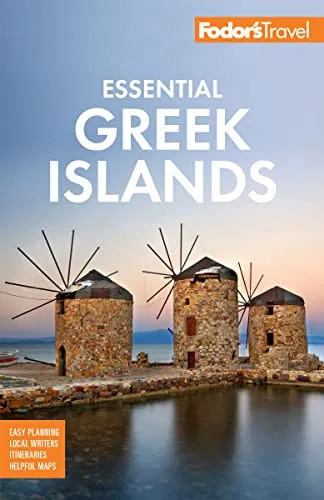Thessaloniki and Central Macedonia
Thessaloniki and Central Macedonia
A land shaped by gods, warriors, and ghosts, Northern Greece sparkles with the sights, sounds, scents, and colors of its melting-pot history and epic geography. Here you will find remnants of the powerful civilizations that battled each other: temples and fortifications built by Athens and Sparta, Macedonian tombs, the arches and rotundas of imperial Rome, the domes of Byzantium, and the minarets and hammams of the Ottomans. Today, these sights rank among the most splendid sightseeing delights in Greece.
Burnished by history, the area that is often called Northern Greece borders Albania, the Former Yugoslav Republic of Macedonia (FYROM, also known as Skopje), Bulgaria, and Turkey. From north to south, this land is heritage-rich. "Even today, house-owners sometimes dream that benea...
Read MoreA land shaped by gods, warriors, and ghosts, Northern Greece sparkles with the sights, sounds, scents, and colors of its melting-pot history and epic geography. Here you will find remnants of the powerful civilizations that battled each other: temples and fortifications built by Athens and Sparta, Macedonian tombs, the arches and rotundas of imperial Rome, the domes of Byzantium, and the minarets and hammams of the Ottomans. Today, these sights rank among the most splendid sightseeing delights in Greece.
Burnished by history, the area that is often called Northern Greece borders Albania, the Former Yugoslav Republic of Macedonia (FYROM, also known as Skopje), Bulgaria, and Turkey. From north to south, this land is heritage-rich. "Even today, house-owners sometimes dream that beneath their cellars lie Turkish janissaries and Byzantine necropolises," wrote historian Mark Mazower in his 2004 book Salonica: City of Ghosts. "One reads stories of hidden Roman catacombs, doomed love-affairs, and the unquiet souls who haunt the decaying villas near the sea."
Around 316 BC, the Macedonian leader Cassander founded what is now the area's major city, Thessaloniki, which grew into a culturally rich and politically strategic metropolis where Christians, Muslims, and Jews lived together for hundreds of years. Today it remains the second-largest city in Greece, is an anchor for arts and culture in the Balkans, and also brims with antiquities, old-style street markets, and old-world European flavor. Beyond Thessaloniki lies Central Macedonia, where you can explore ancient monasteries, admire the frescoed tomb of Philip II of Macedon, hike the bloom-filled trails leading to Mount Olympus, commune with farmers over grilled wild mushrooms, and enjoy some of Greece's finest beaches and seaside resorts.
The region was established as the state of Macedonia in the 8th century BC, and an illustrious monarchy was ensconced by about the 7th century BC. Philip II (382–336 BC) and his son Alexander the Great conquered most of the rest of Greece—except Sparta—and all of Persia. After Alexander's death, his brother-in-law, Cassander, established Thessaloniki as the capital (316 BC), naming it for his new bride, Thessalonica, Alexander's half sister and daughter of the much-married Philip. (Philip had named her after his famous nike, or "victory," in Thessaly, where her mother had been one of the prizes.) The Romans took Macedonia as Alexander's successors squabbled, and by 146 BC, the rest of Greece had fallen under Roman rule. After the assassination of Julius Caesar, Marc Antony defeated Brutus and Cassius at the battles of Philippi in Macedonia in 42 BC. Under Pax Romana, St. Paul twice traveled through on his way to Corinth.
Greek and Macedonian culture bloomed again during the Byzantine Empire (circa AD 312–1453), when the center of Greek civilization shifted from Athens to Constantinople (modern-day Istanbul). Thessaloniki became the second-most important city in the empire, and it remained so during the Ottoman domination that lasted from the fall of Constantinople until the 1912–13 Balkan Wars. That's when Macedonia became part of Greece, and the 1923 Treaty of Lausanne established the present borders with Thrace. The collapse of Yugoslavia in the 1990s rekindled ethnic and religious animosities. Today's northern Greeks are fiercely nationalist, and they strongly oppose the Former Yugoslav Republic of Macedonia's (FYROM) insistence on calling itself "Macedonia" and using ancient Macedonian symbols such as the star of Vergina on its flag, in an attempt to create a speedy and easily identifiable post-Communist national identity. Tempers flared again in December 2006, when FYROM announced plans to name its international airport in Skopje after Alexander the Great.
Name-game squabbling aside, Northern Greece is flourishing. It's a hub for southeast European commerce and culture, and is home to Aristotle University, Greece's largest. The area is also expected to benefit from the Egnatia Odos, a 669-km (416-mile) road project that connected the Greek–Turkish border with the western port of Igoumenitsa. An influx of immigrants, many of them from Eastern Europe and the Middle East, is once again giving a multicultural flavor to Thessaloniki.
Recommended Fodor’s Video
Hotels
Things to Do
Things to Do
Explore Things to Do
Find the perfect tours and activities in Thessaloniki and Central Macedonia.
Where to Eat
Where to Eat
Need to Know
Need to Know
Language
GreekNearby Airports
SKGElectrical Outlets
200v/50 cycles; electrical plugs have two round prongsCurrency
EuroLanguage
GreekElectrical Outlets
200v/50 cycles; electrical plugs have two round prongsCurrency
EuroNearby Airports
SKGWhen to Go
Travel throughout Northern Greece is best from May through October. Fall is beautiful; the air is cool and clear and the forests are dressed...Read More
Neighborhood Guides
Discover the best neighborhoods in Thessaloniki and Central Macedonia with curated recommendations from our editors.
essentials
transportation
resources
When to Go
Travel throughout Northern Greece is best from May through October. Fall is beautiful; the air is cool and clear and the forests are dressed...Read More
Neighborhood Guides
Discover the best neighborhoods in Thessaloniki and Central Macedonia with curated recommendations from our editors.
When to Go
Travel throughout Northern Greece is best from May through October. Fall is beautiful; the air is cool and clear and the forests are dressed...Read More
Neighborhood Guides
Discover the best neighborhoods in Thessaloniki and Central Macedonia with curated recommendations from our editors.
essentials
transportation
resources
Articles
Articles See All
Guidebooks
Guidebooks
Our worldwide travel correspondents bring you the best and most up-to-date coverage of over 7,500 global destinations.
Shop NowFodor's Essential Greece: with the Best of the Islands
Whether you want to explore the Acropolis of Athens, watch the sunset in Santorini, or...
Fodor's Essential Greek Islands: with the Best of Athens
Whether you want to explore the Acropolis of Athens, watch the sunset in Santorini,or...














